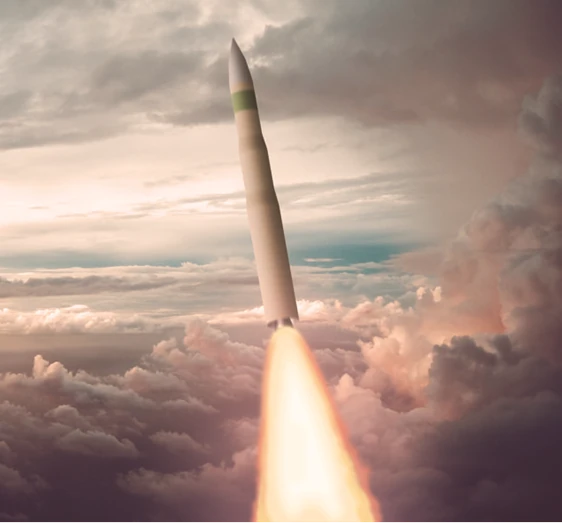There is a possibility that the United States Air Force’s new intercontinental ballistic missile (ICBM) programme will incur costs that would necessitate the consideration of the possibility of cancelling the project. It was first estimated that the amount was 96 billion dollars.
According to one estimate, the cost of each ICBMS and the associated expenses, such as the construction of bunkers, may represent an additional fifty per cent of the existing estimate of one hundred eighteen million dollars without considering inflation. This may increase the cost of the 659 missiles to around 117 billion dollars.
The American military-industrial giant Northrop Grumman devised and oversaw Project Sentinel, which was designed to replace the Minuteman III missiles of the 1970s. Its goal was to completely upgrade the nuclear weapons triad of air, ground, and sea. In part, the undertaking was initiated to impede China’s military expansion.
On the other hand, increasing expenditures may invoke provisions in a law that is 41 years old and is intended to warn legislators about problematic endeavours and compel the Pentagon to justify the program’s justification or risk its formal cessation. This is even though the initiative has substantial support in the United States Congress.
This week, acquisition officials launched an investigation following the transmission of a “Programme Deviation Report” to the Air Force headquarters by the Sentinel programme office at Hill Air Force Base in Utah. According to Bloomberg, fresh information has surfaced regarding the variables forcing adjustments to significant areas of the programme. These factors include the cost of materials and manpower for design and the required period to create launch facilities. According to Andrew Hunter, the chief procurement officer for the Air Force, two of the causes that are driving changes are the cost of materials and labour for design and the amount of time it takes to build launch facilities.
Hunter stated that the USAF is in a slightly different position than when baseline costs for this programme were established in August 2020. He stated that by revising and reporting the new estimates, senior U.S. leaders will have the most recent information necessary to make informed decisions.
Arms control proponents, such as Democratic Senator Elizabeth Warren, who has argued for the extension of the operating life of the Minuteman III missiles rather than the abandonment of the project, could be instilled with confidence if the Sentinel programme has a large cost overrun or delay.
At the height of the Cold War in the 1970s, the United States had 1,000 Minuteman III missiles in service. The missiles went into service in 1970. More than 400 missiles are still in service today.

Nunn-McCurdy Law
The inquiry pertains to whether the Sentinel project will surpass its initial expenditure by more than the amount specified in the legislation from 1982. Additionally, former Senator Sam Nunn and former member of the House of Representatives David McCurdy coined the names of their respective legislators. Costs exceeding the initial estimate by 15%, 25%, or even 50%, contingent upon the categories assessed, mandate that the Pentagon notify Congress and furnish comprehensive justification for every programme.
The Air Force anticipates it will take approximately forty-five days to determine whether or not the ICBM project exceeds the legally authorised funding thresholds.
If the Air Force and the Pentagon conclude that the new cost estimates are higher than the legal criteria, the service must notify Congress and conduct a full study to determine whether the programme should continue functioning or be terminated.
One of the most significant challenges is the expensive costs associated with constructing and transporting components to convert 450 Minuteman III missile launchers and 24 Sentinel launch centres used during the Cold War. According to the budget report for the Senate Armed Services Commission for the fiscal year 2024, the lengthy and complex process will involve acquiring property, construction, deconstruction, removal and installation of equipment, and nuclear certification. The duration of the project is anticipated to be close to ten years.
Furthermore, to connect mines located in five different states throughout the United States, the effort will require the installation of more than 12,000 kilometres (7,500 miles) of underground fibre-optic conduits.
Current estimates place the cost per rocket between $75 million and $118 million, contingent on which expenses are accounted for. For instance, the $118 million amount represents the “programme acquisition unit cost,” calculated by dividing the total development, procurement, and construction cost by the number of units acquired.
The Air Force declined to comment on whether performance issues affect the new cost estimate during the current engineering development phase at Northrop Grumman.
Northrop stated that the organisation continues to advance towards significant development milestones in close collaboration with the Air Force.
